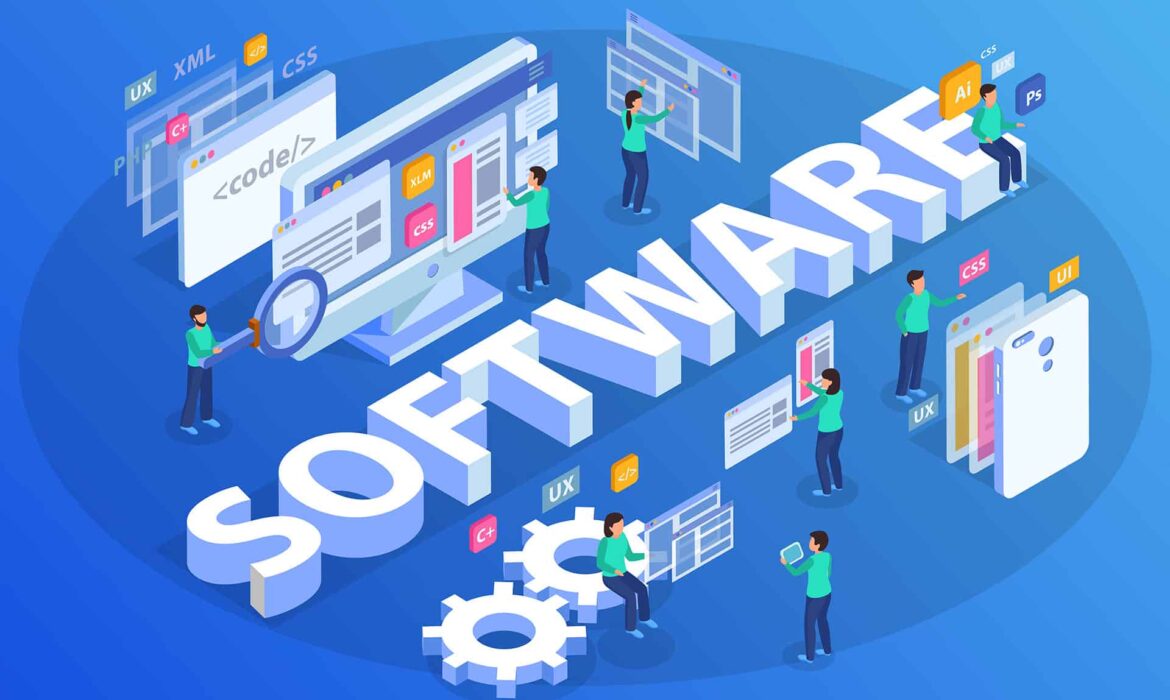 As businesses are embarking on the digitalization journey, software solutions have become a central point of all business operations.
As businesses are embarking on the digitalization journey, software solutions have become a central point of all business operations.
According to Grand View Research, the business software and services market earned a revenue of $389.86 billion in 2020. This value is expected to grow at a CAGR of 11.3% between 2021 and 2028.
Right from the time when FORTRAN was released in the 50s, the software industry has been a favourite vertical for many.
At the same time, several myths and misconceptions are floating around this space.
Here are the top 10 myths about software product development.
1) The Most Popular Language is the Best One
Each developer has a favourite programming language and obviously, it will be the one that he is working on. The general notion is that the most popular programming language is the best in the business. However, it is not true. Different languages serve different purposes. You can’t rank one over the other. While choosing a programming language, consider certain aspects such as business requirements, existing technology stack, developers’ expertise, license and usage costs etc.
2) Coding Knowledge is enough to Build a Product
Most novice and inexperienced developers believe that coding knowledge is enough to build a product. While it is true that you need to learn the code to build a product, software development is not just about knowing how to write the code. You need to have domain knowledge, understand the subject area, think from a customer/user perspective etc. You should be able to think beyond the IT space.
3) Software Development is Expensive
Considering the fact that software engineers are highly paid in the industry, small and medium businesses tend to purchase generic software instead of choosing custom application development. However, a ‘one-size-fits-all’ solution doesn’t suit today’s dynamically changing IT era. When business and user requirements change, realigning IT solutions to meet these needs becomes a challenge. Moreover, when the company grows, you’ll have to rewrite the software.
4) Latest Tools are not always the Best
Often, people believe that using the latest cutting edge tools will make their technology stack robust, powerful and efficient. However, it is not always true. The criteria in choosing a software tool should be the performance, functionality, features, being future-proof, adaptability etc. and not on its popularity. If the tool is not backward-compatible, you’ll have to rewrite your app every time there is an update to the code. So, popularity is not a silver bullet.
5) More People in the Team means Faster Time to Market
In today’s fast-paced world, businesses are required to deliver products faster. As such, people tend to hire more developers to quickly get the work done. Especially, organizations hire more software engineers when the project fails to meet the deadlines. However, adding software engineers to the team doesn’t always expedite the process. It can sometimes become a bottleneck, owing to communication and collaboration issues. A better way is to streamline and orchestrate operations, design the right CI/CD pipelines, apply automation etc.
6) The Project is Done once it goes Live
A software product development project involving various phases such as planning, design and development, testing and deployment. A common notion is that the project is done once the app is uploaded to the app store. However, it is not true. Once the app is available for users, you should monitor the performance, collect feedback and apply changes and updates as and when required. When you don’t update the app for a long time, it might get removed from the app store. In today’s customer-centric product environment, a software engineer job will end only when the app ceases to exist for users.
7) Remote Software Development is Expensive
One common myth in software development circles is that outsourcing software development projects to remote teams incur huge expenses. When you outsource a project to a 3rd party, you will get access to highly experienced professionals. At the same time, you don’t have to deal with the complex hiring process, HR issues, insurance, labour benefits etc. It means you will get the best talent and only be paying for the technical expertise while receiving a quality product in return. The key here is to choose the right outsourcing company for your IT needs.
8) Agile development methods are Complex to Handle
While the IT world is rapidly innovating, agile and DevOps methodologies are becoming an inevitable option. However, some organizations are apprehensive to embrace these methods as they feel it will be difficult to manage cross-functional teams. Implementing a cultural change across the organization is another challenge. So, they continue with the waterfall development process. While the waterfall method seems easy at the beginning, you will end up struggling with flexibility, adaptability, mobility and UI/UX issues once the app is launched.
9) Quality Tools build Quality Products
Often, people believe that choosing a high-quality tool will help them to build a quality product. However, the quality of the product doesn’t depend only on a tool but requires critical thinking, analysis, project planning, communication and collaboration and coding skills etc. Choosing the right tool makes your job easier.
10) Outsourcing is a one-stop solution for all IT problems
Outsourcing is a popular method for organizations to get things done. However, a popular myth is that outsourcing is a one-stop solution for any IT problem and it solves all issues which is not true. Outsourcing is basically done so that the organization can focus on their core processes while the outsourced company handles their IT needs. However, outsourcing comes with its challenges. It is important to choose the right engagement model. When you choose a fixed price model, you might experience service level issues and quality issues. Choosing a dedicated team model is good but it again depends on the company that you select for that project.
Conclusion
Software development is a popular industry that is always evolving. Today’s innovation is tomorrow’s legacy. So, organizations should proactively monitor IT trends and customer requirements and adapt them quickly. Businesses that take application development seriously are sure to surge ahead of the competition.






